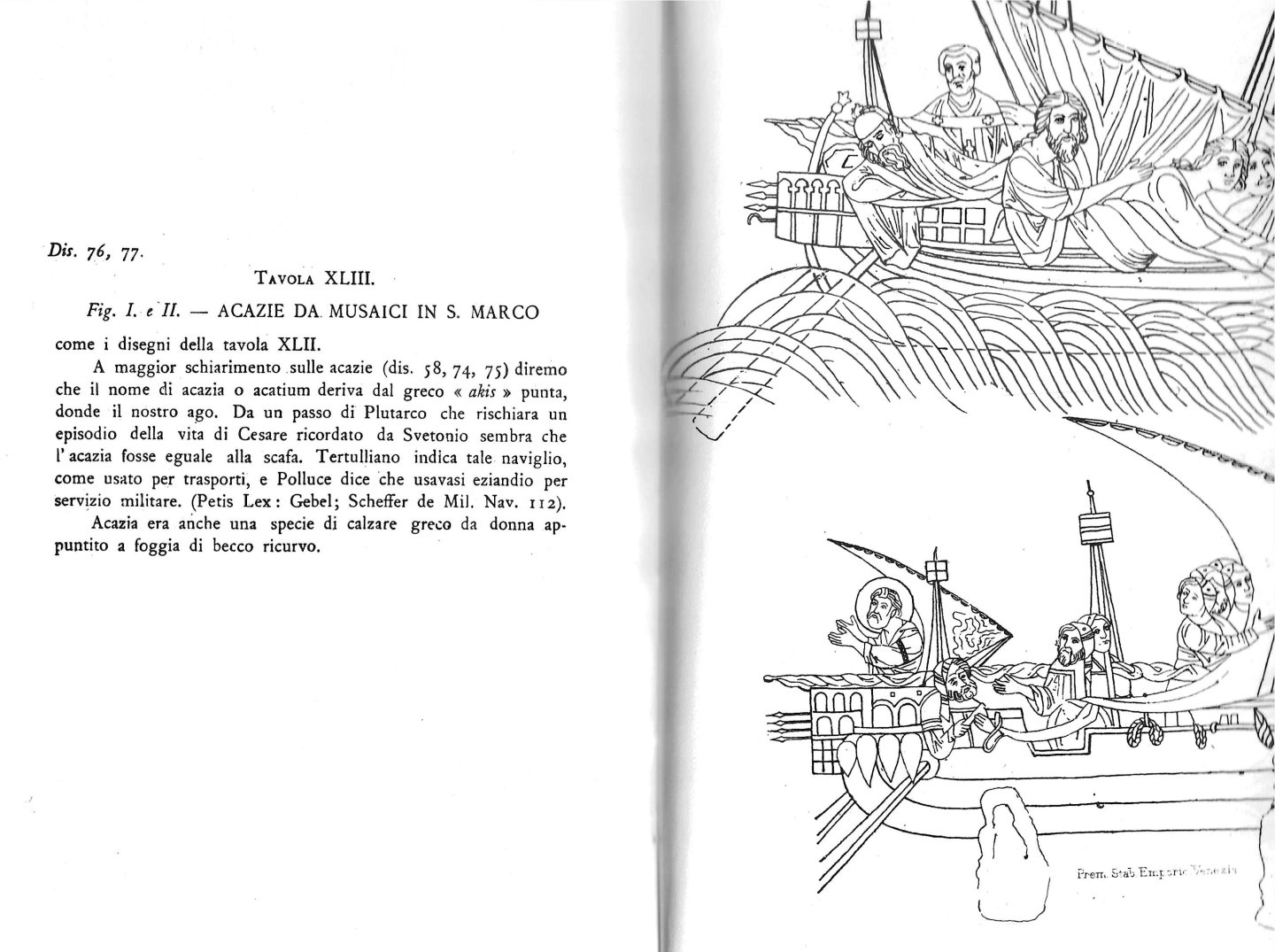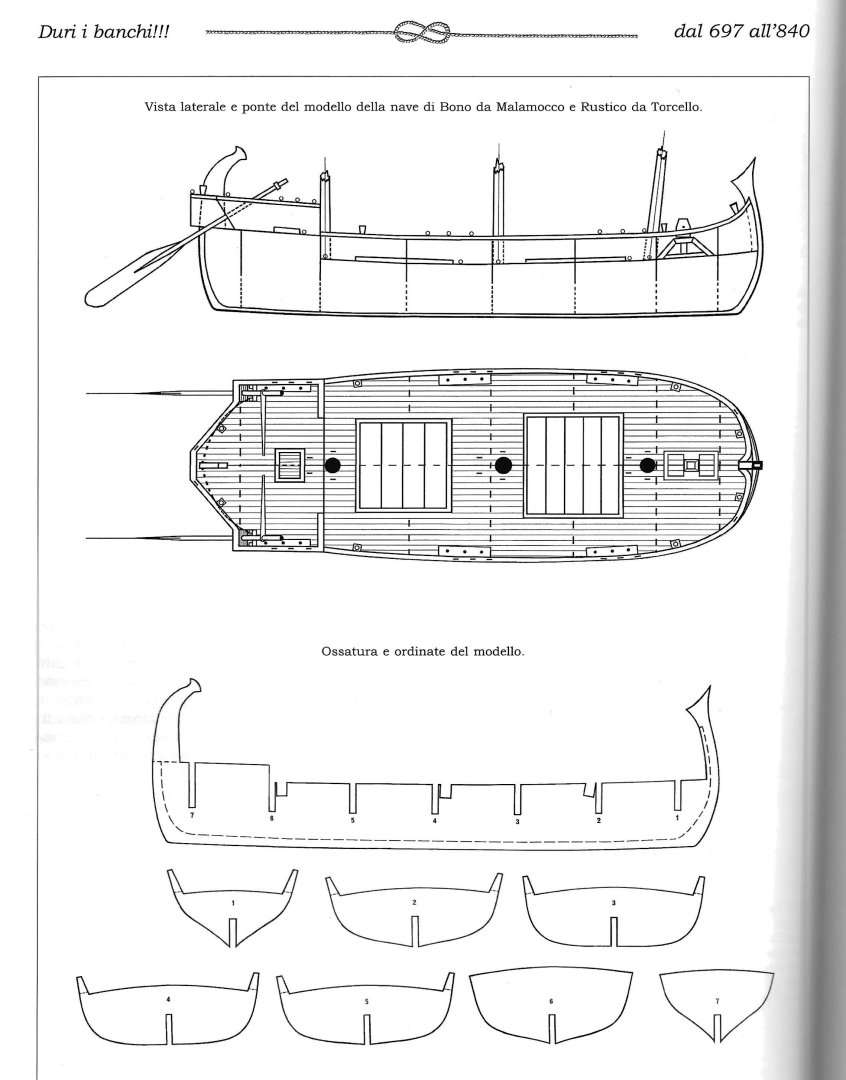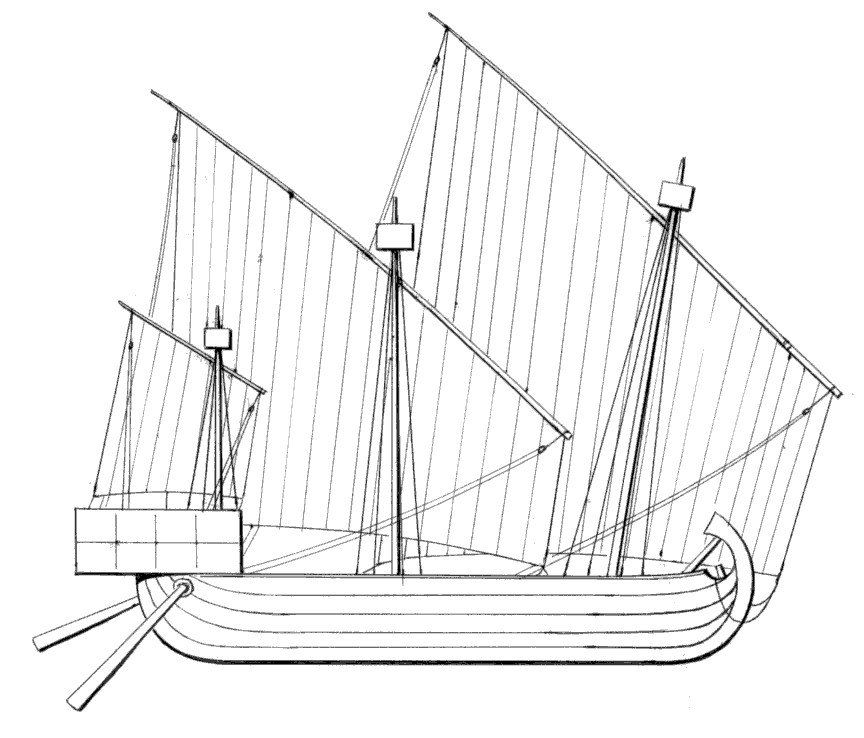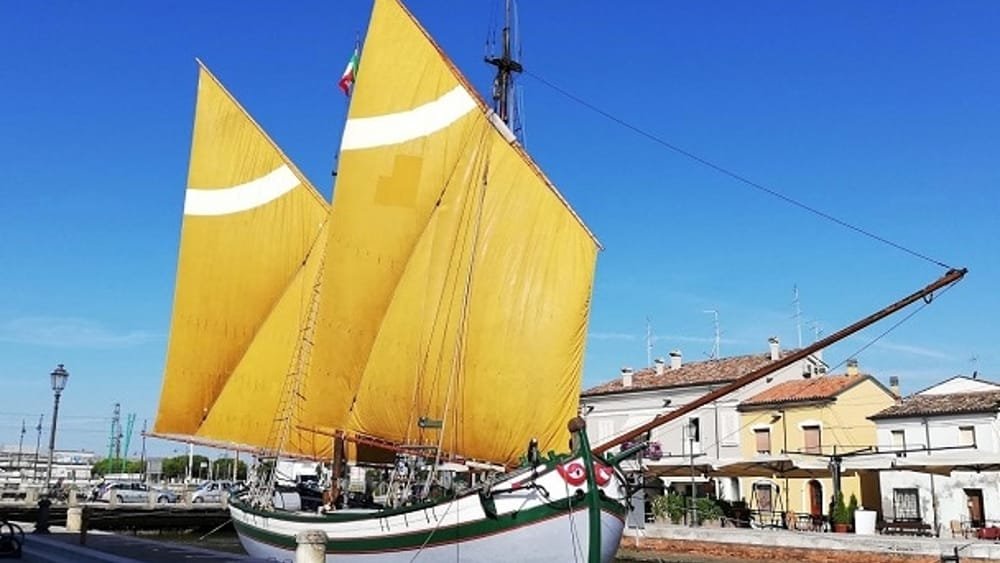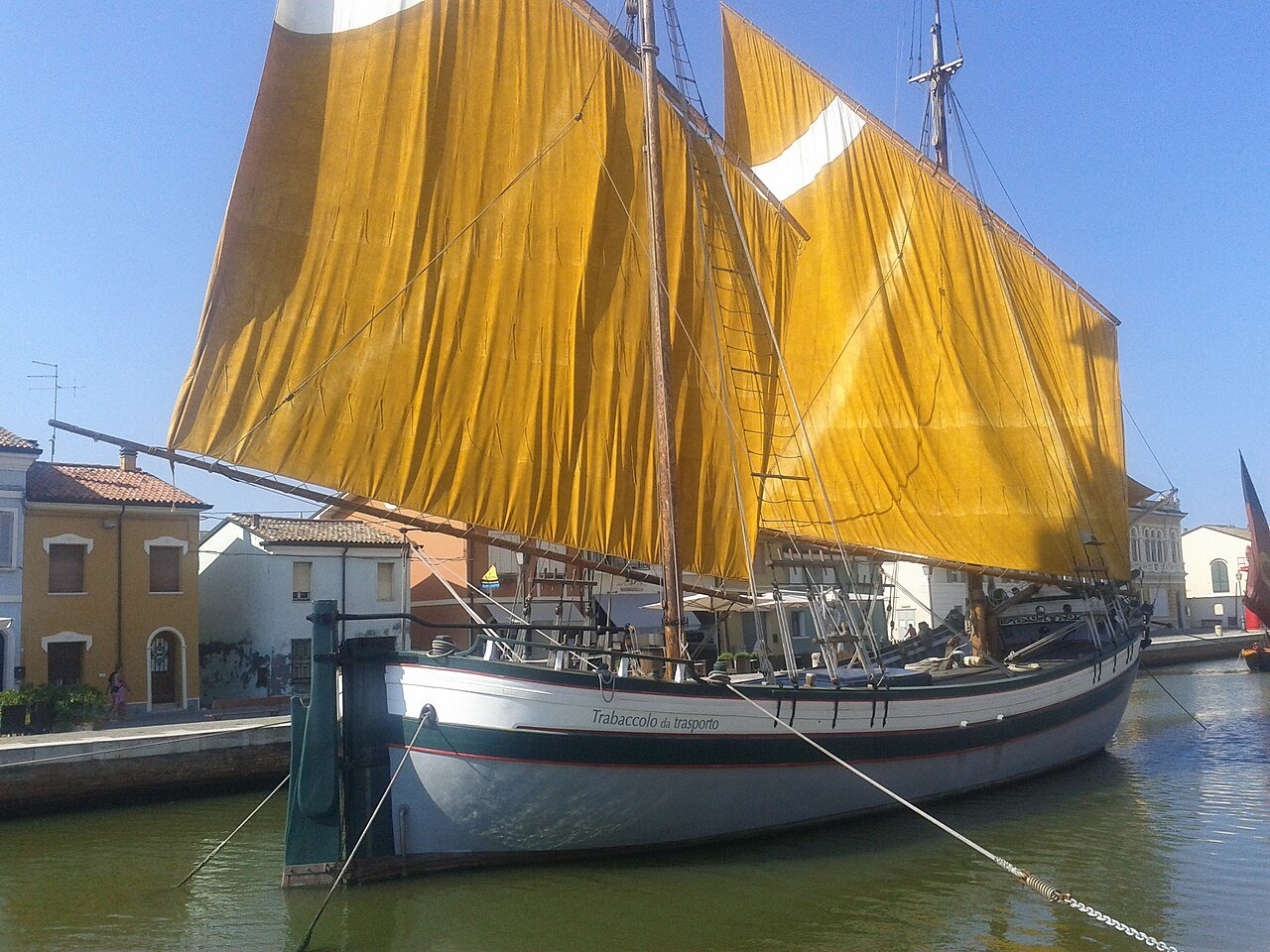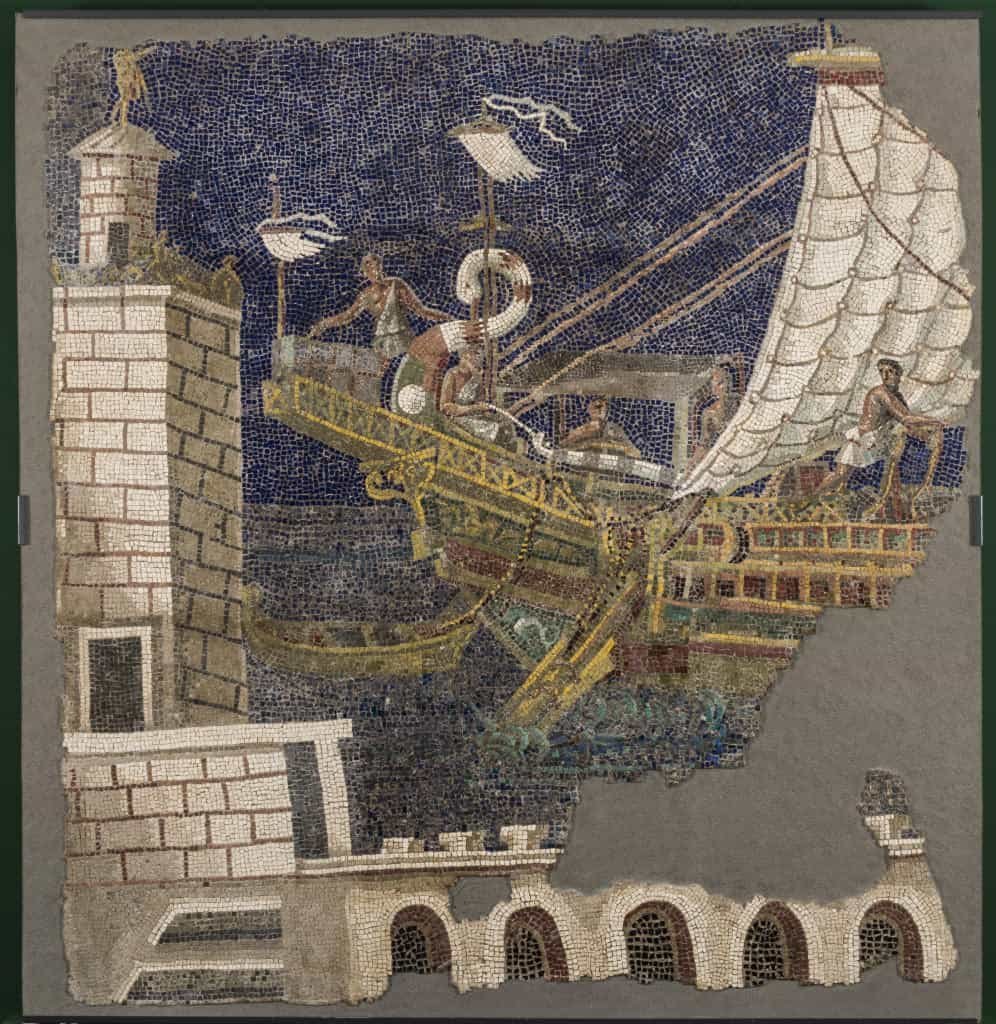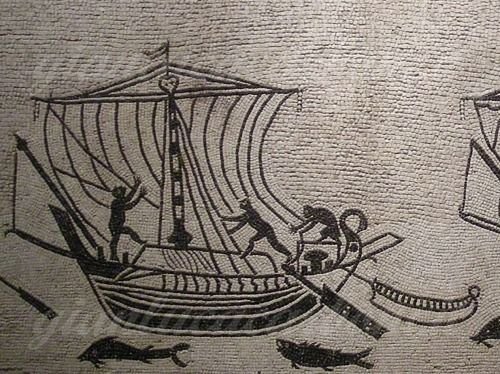-
Posts
399 -
Joined
-
Last visited
About Cristiano
- Birthday 04/18/1970
Profile Information
-
Gender
Male
-
Location
Bologna - Italy
-
Interests
Wood ship modelling, miniatures painting, history, and reading novels of various type
Recent Profile Visitors
-
 mtaylor reacted to a post in a topic:
The San Marco mosaic ship c. 1150 by Louie da fly - 1:75
mtaylor reacted to a post in a topic:
The San Marco mosaic ship c. 1150 by Louie da fly - 1:75
-
 GrandpaPhil reacted to a post in a topic:
The San Marco mosaic ship c. 1150 by Louie da fly - 1:75
GrandpaPhil reacted to a post in a topic:
The San Marco mosaic ship c. 1150 by Louie da fly - 1:75
-
 tartane reacted to a post in a topic:
The San Marco mosaic ship c. 1150 by Louie da fly - 1:75
tartane reacted to a post in a topic:
The San Marco mosaic ship c. 1150 by Louie da fly - 1:75
-
Cristiano started following HMS Endeavour Stern Decoration , The San Marco mosaic ship c. 1150 by Louie da fly - 1:75 , Mamoli and 4 others
-
Hello Steven! You are building a great model! Since there is some discussion regarding the sails type, I want to share my informations, that I have found in my books. Type of ship In all the sources that I have (Italian sources), the "San Marco ships" are all defined ACAZIE (singular ACAZIA). In some nautical dictionary this type of ship is called also ACAZIO. One of the possible origin of the name is greek: "A type of Greek pointed shoe for women in the shape of a curved beak." The Acazia was a small commercial ship (which later evolved in a medium size) of bizantine origin. It was widely used by the Venetians in their first centuries of their Republic. The type of sails used were different. All the sources write about the fact that the sails used in the origin were latin type and then evolved in squared type. The ACAZIA in the Adriatic sea later evolved in the TRABACCOLO. Some Trabaccoli are still existent as historical ships in the Adriatic sea. Type of sail The images on the San Marco Mosaic present apparently a square sail type. But the sources that I have checked (all Italian sources) make a reconstruction with a trapezoidal type sails (like the Trabaccolo). Sources Below the main sources (but other ones are present in the web, too) https://libreriaeditricefilippi.com/negozio/levi-cesare-augusto-navi-venete-da-codici-marmi-e-dipinti/ This an anastatic reproduction of the original book published in 1892 by Cesare Augusto Levi. The author was an important historician and researcher of the Venetian history. https://www.amazon.it/DURI-BANCHI-DELLA-SERENISSIMA-421-1797/dp/B00O4YDS9S/ref=sr_1_16?dib=eyJ2IjoiMSJ9.CQIl8kQjfcs5H31zAMbEGRDNWdGE1lwAGnQW4QSa6vQkYT-oaKdV7FX-S1mNfB9XNcTWfxCyfFD3Lacj6bj6Vpkwy3H4m1u5pkUErEhzOoEkcVJ5es8JQZn2JCdz5AgmB5i3khbz-AgOQD-4Pi68_nIwXqyoobOsd5vOH1LvT9_xqTSTIh9KVUdUn30ooDZZ0FFVwISx24u_W5c8EGub09fBgJQHvjOBXjqcWUvsHE4.kNycIzatH6oMLZOsFxnKdIvOonpvShMlBbxpAydtfzI&dib_tag=se&qid=1714033030&refinements=p_27%3AGuido+Ercole&s=books&sr=1-16 The author, Guido Ercole has a deep and focused knowledge on the history of the Venetian Navy. He has written several books on that matter. Some of his models are currently on display in the Naval Museum of Venice. https://www.cherini.eu/ The brothers Chierini had made a deep research through their books of the various ships related to the history of the Italian commercial ships during the centuries. The material available in their website is huge and documented by their bibliography. Their website as a source of informations exist till 20 years. The drawings are presented in a more organic way, drawn by one of the brothers. FINAL NOTES @tartane: don't be so absolutist in your evaluations. I don't know your knowledge regarding the history of sailing ships of the Mediterranean basin, but trust me, the matter is very complex. There are few absolute definitions and many exceptions in the history of commercial sailing ships of the Mediterranean basin. the Mediterranean basin has been for millennia the center of exchange of cultures and technologies and the complex situation related to names and types of ships reflects this. The same type of sailing ship can change greatly from Greece to Italy to Spain, but all in the past defined it eventually with the same name. There are several hundreds of type of sailing ships that can be considered in the Mediterranean basin, and some of them eventually differ only by name or sail or minor details. You're right, the ships of the mosaic appears with squared sails, but the history that surround this specific type of ship doesn't follow that path. @Louie da fly: The two odd reinforcement in the bow in my opinion should be kept and have a real purpouse: it is possible that they prevent entanglement of the sail and ropes with the bow during the jibe operations (I don't know the exact term). Images: The reconstruction of the hull of the Acazia of San Marco, from one of the books. An hypotesis of the sails type. Various photos of a Trabaccolo: that one is the "Giovanni Pascoli" and is exposed in a floating museum in Cesenatico - Italy. This is considered the "evolution" of the Acazia, in the Adriatic sea.
- 392 replies
-
 GrandpaPhil reacted to a post in a topic:
Mamoli
GrandpaPhil reacted to a post in a topic:
Mamoli
-
if cm is in capital letters (CM), is right. The old sheets of Mamoli kits present some tricky abbreviations for materials. They made acronyms using Italians words, and sometimes not related in anycase to Italian words. So the best way is to check the drawings and see which material can be related and use it for all the matching acronyms. Some example: NO= Noce (walnut) CO=Corda (rope) MET= metallo (metal) OTN=ottone (brass) and so on.
-
I don't have here a sheet of Mamoli ships but usually if related to lenght, cm is a fraction of meter in terms of lenght. 100 cm=1 m = 1000 mm the cm are used often in Italy, but internationally not. Internationally are more often used mm and meters.
-
 Cristiano reacted to a post in a topic:
Occre Santisima Trinidad question
Cristiano reacted to a post in a topic:
Occre Santisima Trinidad question
-
This happened to me in minor ways with others models. It is possible that this model project is rather old and they never upgraded it. Now the stern costruction is solved by manufacturers with laser cut multiple metal pieces instead of a single cast piece. The original stamp of your model is old and clearly deformed by wearing. Below my suggestions: Stern modification The front of the stern panel must be leaved as it is. You cannot bend with heat, since is fragile metal and not ductile one, so get broken. The rear of the stern can be carved in order to let have a more deep bending in the central part, using a hobby electric drill (the ones with small grinding wheels that can be attached). then you must glue it to the ship (after priming the piece). After is firmly glued, you can use modelling paste like the Kneadatite (called also green stuff) to fill the gaps with the hull and give continuity to the surface. Otherwise the wood filler, but usually it doesn't adhere properly to metal surface. The Kneadatite adhere best to metal. The Kneadatite is a common paste sold in the models shops. is a very common product in the model fields. Stern painting After you have modified it, but before glueing to the hull, cover with black matte primer, better to use a spray one. you can eventually paint with related colors the details internal parts of the stern, leaving only primered the external frame, too. I suggest to use acrylic paint for decoupage, since they contain big pigments and have a better covering capability. After you have glued to the hull and successully filled the gaps with the hull, you can paint the external frame. The paint needs fixing of course. So you must cover with plastic the area surrounding the stern and spray a matte transparent paint. if you have some doubts, feel free to ask. I am Italian, so english is not my mother language. so sorry is something is not explained well.
-

I've lost it....need a refresher to get my confidence back
Cristiano replied to bigcreekdad's topic in Wood ship model kits
I suggest the following kits, by Amati. https://www.amatimodel.com/en/models-amati-classic/product-robert-e-lee-assembly-box-2024-edition-b1439.html?_gl=1*1y7f76j*_up*MQ..&gclid=CjwKCAjw17qvBhBrEiwA1rU9w_ycr4hf1YAwInKylBzFOnaL2uVCYrfPsHXfh41Hk42oM-V6KYhXPBoCfKgQAvD_BwE Classical steam boat Robert E. Lee. the problem of the hull planking is solved, since there is no hull planking at all. otherwise: Pirate chinese junk. https://www.amatimodel.com/en/models-amati-classic/product-chinese-pirate-junk-b1421.html?_gl=1*1xcnvvq*_up*MQ..&gclid=CjwKCAjw17qvBhBrEiwA1rU9w_ycr4hf1YAwInKylBzFOnaL2uVCYrfPsHXfh41Hk42oM-V6KYhXPBoCfKgQAvD_BwE the problem of hull planking is solved here too, since the bow and stern are cut stright due to the specific shape of this ship. -
 Cristiano reacted to a post in a topic:
Why do OcCre models start with the first plank partially down the hull?
Cristiano reacted to a post in a topic:
Why do OcCre models start with the first plank partially down the hull?
-
 Cristiano reacted to a post in a topic:
Looking for suggestions
Cristiano reacted to a post in a topic:
Looking for suggestions
-
 Cristiano reacted to a post in a topic:
Looking for suggestions
Cristiano reacted to a post in a topic:
Looking for suggestions
-
Of course Joachim, but sometimes there are "small artistic deviations" that I prefer to take to maintain the nice look of the model. Some observers may interpret certain choices (metal parts completely white) as a lack of artistic ability on painting. The black metal parts of the rudder are more nice to the eye...
-
Regarding the mordant, probably is also knew also as "wood stain", available as ready to use or in powder to be blended with water, and so on. the various type of wood colors can be easily found in all the hobby stores. Regarding the white, I usually use the "acrilic paint for decoupage". it appears an odd choice, but it is a type of color that is very efficient in terms of result. The acrilic paint for decoupage contains very big pigments (the opposite of the acrilic paint for plastic modelling), so the covering efficiency is very very high. you cover the wood without the risk to soaking it with the water present in the color. Below is an example of a mine model present in my gallery: All the colored parts are made with acrilic paint for decoupage (whyte, ocra yellow, yellow and black). The masts and bowsprit are "colored" with wood stain (walnut light color) or mordant, the original wood was lime wood. The pedestal, again was lime wood, "colored" with cherry wood stain Unfortunately I am from Italy, so I cannot suggest specifically a label of acrilic paint available in your market, but more or less the equivalent in your country of mine should be the following (Amazon USA link): https://www.amazon.com/Apple-Barrel-Acrylic-PROMOABI-Assorted/dp/B00ATJSD8I/ref=sr_1_10_sspa?crid=2ISXK4FQ4P330&keywords=allegro+paint&qid=1705880135&sprefix=allegro+paint%2Caps%2C163&sr=8-10-spons&sp_csd=d2lkZ2V0TmFtZT1zcF9idGY&psc=1 Regarding wood stain, the best that I have used are solvent based, so cannot be shipped by Amazon, due to the solvent presence. But browsing with the web you can find many wood stain manufacturers in your Country.
-
you can eventually paint the wood with mordant. I know that you don't want to paint your model, but using mordant is not like painting a model. There are various colors available on market. I used extensively mordaunt in the past for coloring the base of my models, accessories and some hull. I converted lime wood in cherry wood or walnut wood. The level of color darkness and saturation of the final result depends by the layers of mordant that you lay on wood. You can make some experiment on spare stripes. the mordant exalts the wood grain, but it must be made attention to the traces of glue on wood. The traces of glue let the mordant be absorbed with a resulting different colour.
-
Have you considered to create them using the "green stuff" (technical name is kneadtite)? I too, was not satisfied of the stern of the Corel kit, so I modified it heavily using the green stuff. Check my result: It was rather easy, since the green stuff can be modified for various hours before becoming hard. It is rather cheap too. Of the original stern, I saved only the windows...
-
Of course, probably is correct, but it is not easy to find some additional and sound informations. I saw that in many Italian archeological articles related to roman wreckage found in the sea, there are often reconstructions of the merchant ships like the one below, but I never dig further on the argument (the below one is related to the discovery of the "Nave di Marausa")
-
Since it is a "minor detail" regarding the daily life of a Roman sailor, it is hard to find informations. In anycase generally I agree with allanyed: the service boats were towed. regarding the possibility to use a mast like a crane, it was documented as a way to unload goods from the big Roman merchant ships, using the foremast. Vitruvius wrote of this. In the Roman paintings and mosaics the service boat has always been shown towed (or not shown at all). (The famous Nave Europa from Pompei)
-

Question about Symbol on building mast
Cristiano replied to ChuckP's topic in Masting, rigging and sails
Allan is completely right. Correct. -
 Cristiano reacted to a post in a topic:
Question about Symbol on building mast
Cristiano reacted to a post in a topic:
Question about Symbol on building mast
-
 Cristiano reacted to a post in a topic:
Examples of 17th century English galleon commander and officers cabin interiors
Cristiano reacted to a post in a topic:
Examples of 17th century English galleon commander and officers cabin interiors
-
in the below link other photos of the wreck. The article is one year old... I am interested too in the legal battle, since as it was written in an article that I posted some weeks ago: Spain reclaim all its royal galleons (and related content) that are in the sea bottom as of its property, but here Colombia and Bolivia reclain the property too..... for different reasons. https://www.dw.com/es/tesoro-en-el-mar-nuevas-imágenes-del-galeón-san-josé/a-62065756
-
I add to the forum this sequence of four articles written by an Italian expert of Spanish naval history (he defines himself a treasure hunter), which has written a book about historical shipwrecks: CLAUDIO BONIFACIO. The author lives in Spain and has explored for various years the Spanish archives related to the Spanish fleets and the goods transported. The matter is interesting since the Spain consider their ancient ship wrecks (related to governative military ships) still as their property, so their content is theoretically still their. The author make an analysis of the various shipwrecks and the amount of gold/money lost and transported... The overall quantity still under the sea is impressive. The overall economical balance is in the fourth article, but each article has a partial one. UNFORTUNATELY (or luckily, it depends) the articles are all Italian written....but Google translate can make miracles. The order of the articles are from the first to the last. https://www.lastampa.it/mare/2023/03/09/news/laltra_banca_di_spagna_che_sta_in_fondo_al_mare-12684974/ https://www.lastampa.it/mare/2023/03/19/news/laltra_banca_di_spagna_la_lista_dei_naufragi_apre_la_via_alloro-12703246/ https://www.lastampa.it/mare/2023/04/22/news/laltra_banca_di_spagna_loro_mancante_della_san_pedro_alcantara-12768605/ https://www.lastampa.it/mare/2023/09/05/news/laltra_banca_di_spagna_quelle_750_tonnellate_doro_che_riposano_sui_fondali-13027885/ If someone is interested, other articles about shiprecks written by the same author: https://www.lastampa.it/mare/2023/05/14/news/alla_ricerca_delle_fortune_sommerse_lungo_la_costa_dorata_delluruguay-12805340/ https://www.lastampa.it/mare/2023/02/09/news/nelle_acque_delle_bahamas_ci_sono_tesori_milionari-12633036/
About us
Modelshipworld - Advancing Ship Modeling through Research
SSL Secured
Your security is important for us so this Website is SSL-Secured
NRG Mailing Address
Nautical Research Guild
237 South Lincoln Street
Westmont IL, 60559-1917
Model Ship World ® and the MSW logo are Registered Trademarks, and belong to the Nautical Research Guild (United States Patent and Trademark Office: No. 6,929,264 & No. 6,929,274, registered Dec. 20, 2022)
Helpful Links
About the NRG
If you enjoy building ship models that are historically accurate as well as beautiful, then The Nautical Research Guild (NRG) is just right for you.
The Guild is a non-profit educational organization whose mission is to “Advance Ship Modeling Through Research”. We provide support to our members in their efforts to raise the quality of their model ships.
The Nautical Research Guild has published our world-renowned quarterly magazine, The Nautical Research Journal, since 1955. The pages of the Journal are full of articles by accomplished ship modelers who show you how they create those exquisite details on their models, and by maritime historians who show you the correct details to build. The Journal is available in both print and digital editions. Go to the NRG web site (www.thenrg.org) to download a complimentary digital copy of the Journal. The NRG also publishes plan sets, books and compilations of back issues of the Journal and the former Ships in Scale and Model Ship Builder magazines.



